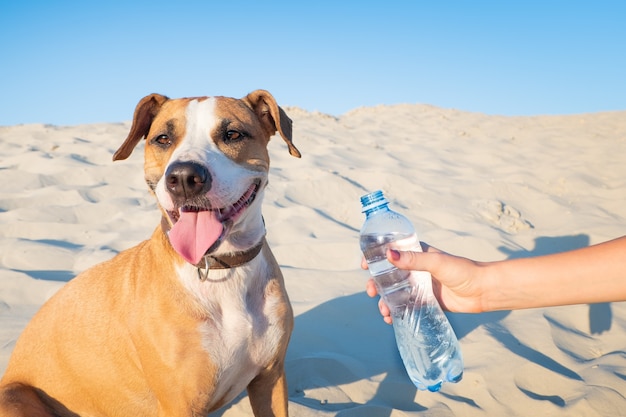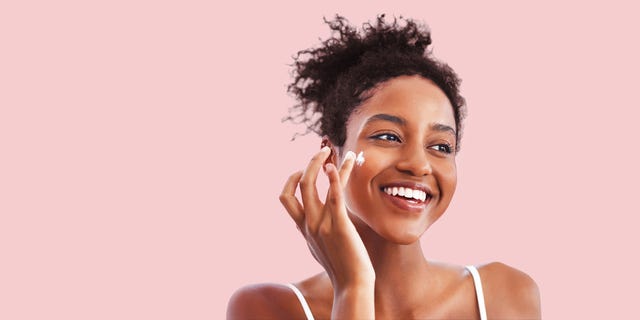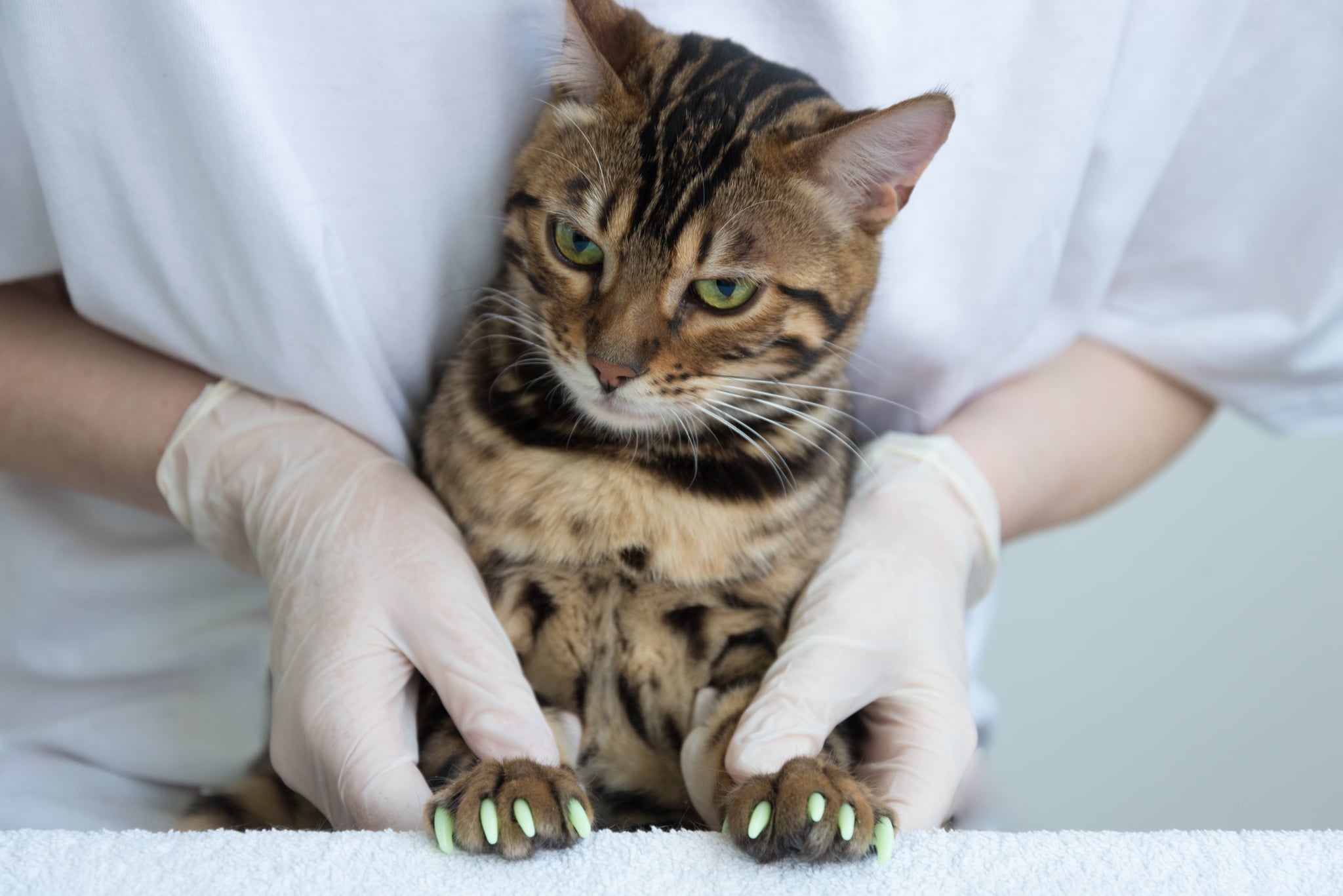
Notice your dog lapping from his water bowl frequently, especially after exercise or in warm weather? That’s a good sign, y’all. Dogs, like people, are made up of about 80 percent water, and like us, they need to drink enough water to prevent dehydration, help their organs function well, and keep those cute noses moist. But just how much water should your furry friend drink daily?
“There is a calculation that you can do to figure out how much your dog should be drinking. It averages out to be about one ounce per pound of the dog’s body weight every day,” says Dr. Stephanie Lantry with Airvet, a 24-7 veterinary telehealth service out of Sarasota, Florida. So, a 10-pound dog would need about ten ounces of water a day, whereas a 50-pound dog would require more like 50 ounces, a little shy of a half-gallon.
Continue reading →

“All of a sudden, I was just like every other pet owner — scrambling to find a vet when every hour counts,” Werber said. “It was a terrifying feeling.”
Werber found a vet, but he realized there was no quick and efficient way for pet owners to connect with a vet to get urgent advice.
Pet owners had to rush their pets to 24-hour emergency pet hospitals and then wait hours to be seen, even if all that was really needed was expert advice on how to handle a pet crisis at home.
So, the entrepreneur with one startup under his belt decided to launch another — this one focused on developing a platform to match pet owners needing care advice for their pets with veterinarians willing to provide that advice on demand. And in November 2018 Beverly Hills- based AirVet Inc. was born.
Continue reading →

“Whether you’re on the phone, texting or emailing, put it away and give the doctor your undivided attention. You took time away from your life, drove to the office, paid your copay for some valuable information but you’re too busy to listen to what the doctor has to say? Respect your time and respect the doctor’s. I’ve had to walk out on patients who expected me to wait for them to finish their conversation. I have other patients waiting so I move on,” says dermatologist Dr. Peterson Pierre, of the Pierre Skin Care Institute in Thousand Oaks, CA.
“The appointment time is set aside for you and your concerns. Don’t waste it by trying to get medical advice for someone else: spouse, child, parent, sibling, friend. It doesn’t matter,” says Pierre.
“The doctor has set time aside to focus on you and your health. Why ask medical questions about the person who came with you when that person doesn’t even have an appointment? It’s using up your appointment time, it’s disrespectful of the doctor’s time, it puts him in an awkward position of providing medical advice with limited information, and it takes time away from other patients who have scheduled appointments,” says Pierre.
Continue reading →

There’s a reason retinol is still a star of the skincare world and the go-to recommendation of derms everywhere, even after more than three decades in the mainstream market: It works. “I always say if there are only two things you’re going to use as part of your regimen, it should be sun protection and retinol,” says Peterson Pierre, M.D., a dermatologist in Thousand Oaks, California.
Retinol is the cousin of prescription retinoids, such as tretinoin. Both are retinoids and therefore both a vitamin A derivative. “Tretinoin was first used primarily to treat acne, until we saw that it also improved tone and texture and stimulates collagen, which helps with fine lines and other signs of aging,” he explains. Tretinoin and other prescription retinoids, however, aren’t for everyone; they can make skin extremely dry, red and sensitive, plus they require a derm visit to get an Rx. Retinol became popular and continues to be because it’s an effective alternative.
Continue reading →

It all has to do with the change in temperature and lack of moisture in the air during the cold weather months.
“Without enough protective oils, moisture escapes from the skin which leads to dryness, an effect that intensifies as the temperature and humidity drop during the winter months,” explains Peterson Pierre, MD, dermatologist in Thousand Oaks, California. Wind and indoor heaters contribute to this problem as well, he adds.
“Unfortunately, dryness can lead to itching and cracks in the skin which can predispose you to infection and it can also cause eczema to flare,” says Pierre. “Lack of hydration can also accelerate wrinkle formation.”
Continue reading →

What do you get when you cross a nationally renowned veterinarian, an MBA graduate from USC and a reality TV star?
Peace of mind for pet owners, if everything goes to plan for Beverly Hills-based Airvet, a veterinarian telemedicine startup that has raised $14 million since launching two years ago, with backing from local venture investors Hawke Ventures and Bracket Capital. The enterprise last week launched a program to give anyone who gets an animal from a participating rescue shelter a free telemed visit and a 72-hour window for follow-up consultations–a package of services typically offered for $30.
Continue reading →

According toboard certified plastic surgeon, Dr. Rady Rahban, recovery can be broken up into two categories: immediate and long-term.
“Immediate recovery, meaning when you can go back to work, depends on the areas that are liposuctioned and the technique used,” he explains.
This can take anywhere from 5 to 7 days before you can return to work and 4 to 6 weeks before you can get back to physical activities, such as exercise.
A long-term recovery typically lasts 3 months. This allows swelling to decrease.
Continue reading →
:max_bytes(150000):strip_icc():format(webp)/workout-569872aa71d2427eae9a766b97380ce1.jpg)
You know that rosy flush you get after exercise? That is a sign that your skin is being infused with oxygen and nutrients.
“Exercise can be very beneficial to your skin and overall health by increasing blood flow,” says Pierre. “This not only improves the delivery of oxygen and nutrients to the skin, but will also accelerate the removal of waste products and free radicals, thereby protecting the skin from further damage.”
Another benefit of that rosy flush? You can skip the blush and let your natural beauty shine through!
Continue reading →
:max_bytes(150000):strip_icc():format(webp)/promo1-db9bc9b91c9f440a9fa0feae00d046eb.jpg)
I’m a fan of exfoliating a few times a week because it’s known to increase collagen production and polish away dead skin cells (those can make your skin look dull). However, I’m not a fan of super-gritty exfoliants that tend to irritate my skin. In my teens and 20s, I was all about an intense physical exfoliation, but these days, it’s too harsh for my nighttime skincare routine. “When you’re first starting out, you should probably exfoliate once a week, especially if you have sensitive skin,” board-certified dermatologist Dr. Peterson Pierre of the Pierre Skin Care Institute tells Byrdie. “This is primarily to assess tolerability and efficacy. After two weeks, you can progress to twice a week. Ultimately, two to three times a week is ideal.”
My top pick is Tatcha’s The Rice Polish Foaming Enzyme Powder ($65) because it’s created with rice and papaya enzymes to deliver a creamy foam that softens and gently exfoliates. The secret is in Hadasei-3–a trio of anti-aging Japanese superfoods green tea, rice, and algae that promote youthful radiance. Also, this non-abrasive formula also combats uneven skin tone and hyperpigmentation.
Continue reading →

There’s a lot of things to love about cats: their playful nature, sweet purrs, and gentle demeanors first come to my mind. However, I’m pretty confident in saying that their constant scratching and clawing at furniture is not a favorite quality. While this behavior can be extremely frustrating, declawing feline friends is generally unadvised by experts except in rare situations. According to the Humane Society, declawing is known to be quite painful and can lead to infection, lameness, and tissue death.
“Some cats may have an adjustment period of a few days. While the caps are not painful, they likely feel ‘funny’ for your cat to wear at first,” Dr. Garner said. However, the caps can be painful if they’re applied incorrectly or if your cat is particularly sensitive to the adhesive, Anthony Hall, DVM, MPH, an expert vet at Airvet, told POPSUGAR. For this reason, it’s important to watch your cat’s behavior for any sign of intense discomfort if you chose to put on claw caps.
Continue reading →





:max_bytes(150000):strip_icc():format(webp)/workout-569872aa71d2427eae9a766b97380ce1.jpg)
:max_bytes(150000):strip_icc():format(webp)/promo1-db9bc9b91c9f440a9fa0feae00d046eb.jpg)
